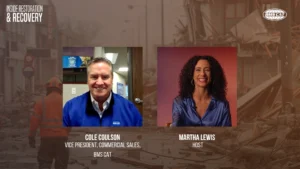Best Practices in Non-Toxic Sanitizing for Businesses
Which cleaning supplies are stocked in the janitor’s closet? Typically, that’s a decision that has been made down the org chart, if anyone is making the call at all.
Now, during the coronavirus pandemic, the buck may stop at the very top when it comes to the choice of disinfectants or cleaning products.
With public health a top priority, decision-makers need to be educating themselves, said John Shanahan, President and CEO of Ionogen.
“Building owners and managers have to start reading safety data sheets. They have to start understanding what toxins are being sprayed in their buildings,” Shanahan said. “In the case of commercial buildings and even restaurants, what they need to do is look at what innovation is here. What’s coming out of COVID that will allow them to reopen, have limited worker illness and improve the overall health of the building?”
One of those solutions is similar to innovations in swimming pools, where we’ve replaced chlorine and bleach with rock salt in order to kill bacteria and viruses.
“Now imagine if you could take the same concept and put a dry fog in a restaurant or a movie theater or in a hotel room. It’s a nice dry fog. It doesn’t look like London, but it’s a little bit of haze in the air,” Shanahan said. “Now someone comes in with the worst case of COVID or measles or tuberculous, and they sneeze or cough. Just like the swimming pool, that would take that virus out of the air, it would knock it right down so the virus can’t travel to a desktop, the virus can’t travel to me and get caught in my upper respiratory system.”
It’s on business leaders to make sure their employees and guests are safe, so research into what chemicals are present and what they do will be critical as businesses reopen.
For the latest news, videos, and podcasts in the Building Management Industry, be sure to subscribe to our industry publication.
Follow us on social media for the latest updates in B2B!
Twitter – @MarketScale
Facebook – facebook.com/marketscale
LinkedIn – linkedin.com/company/marketscale








